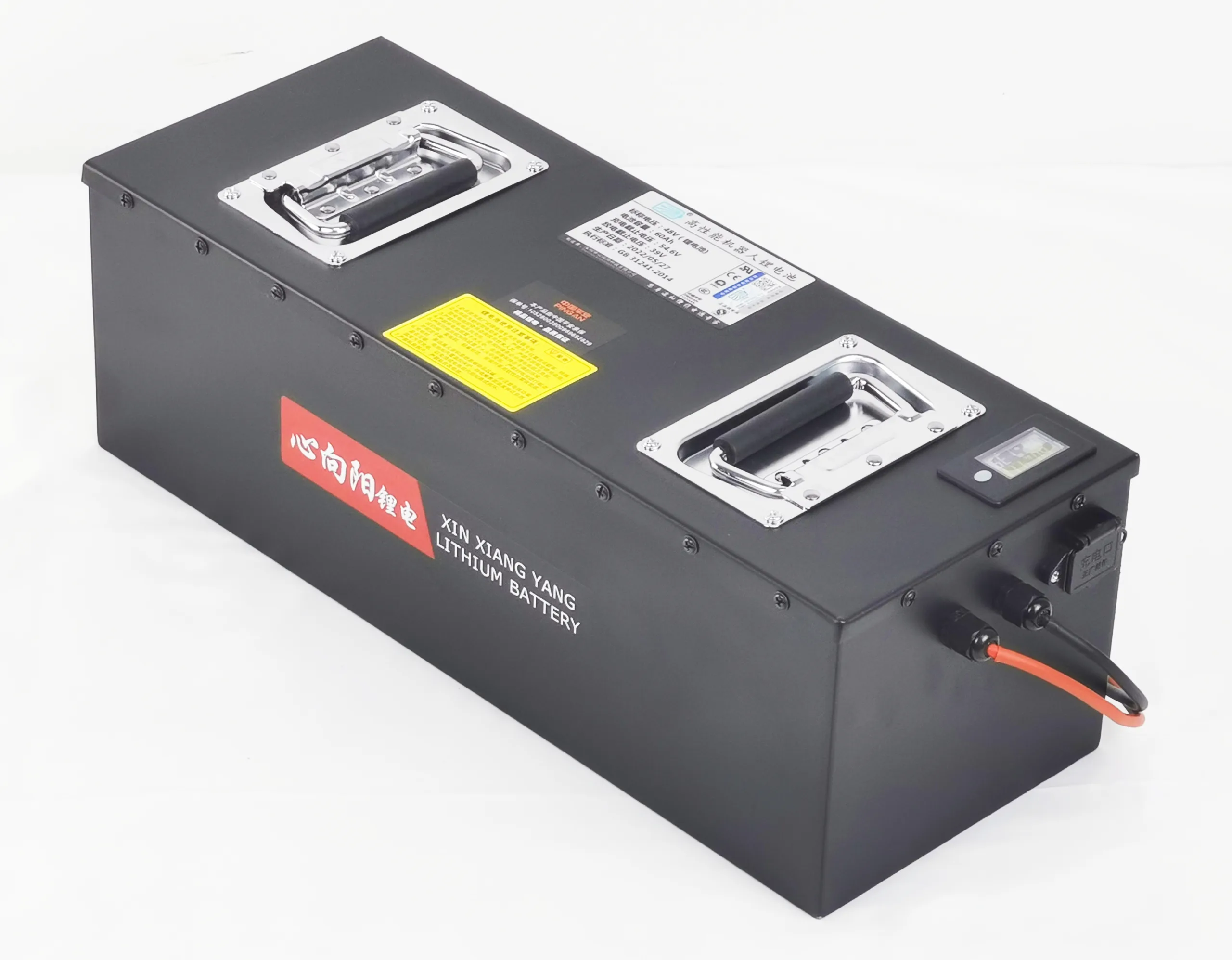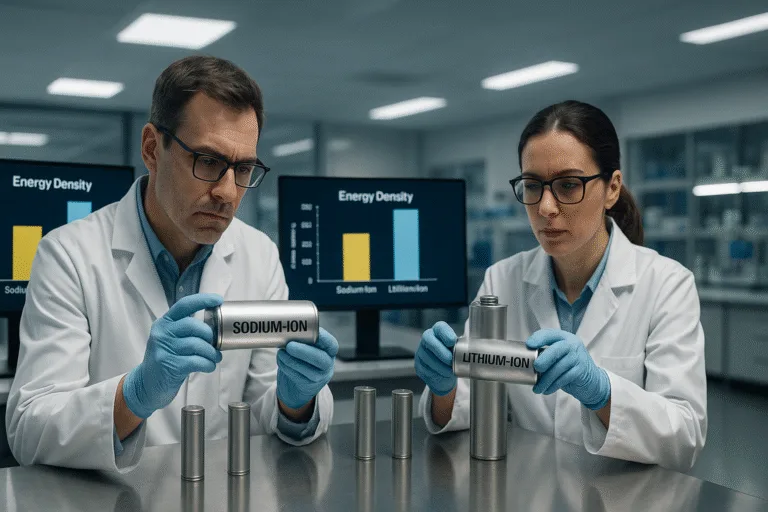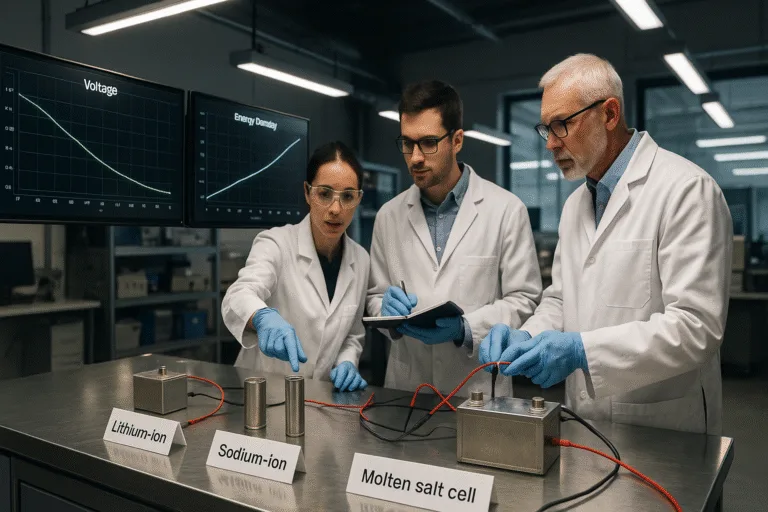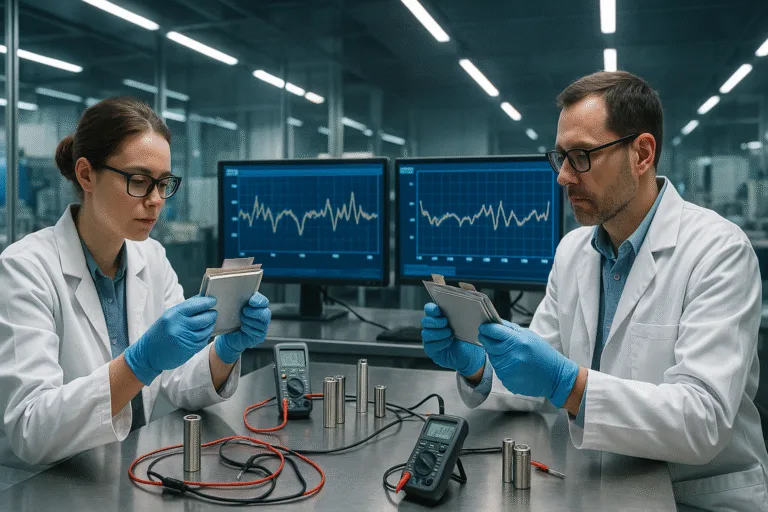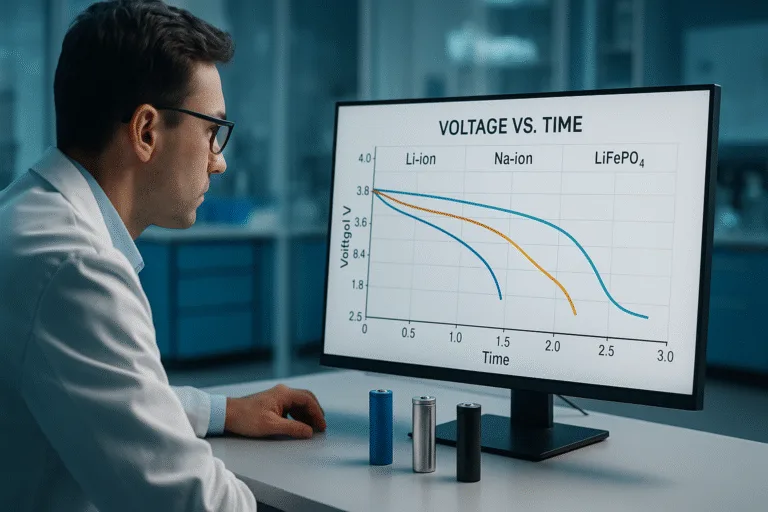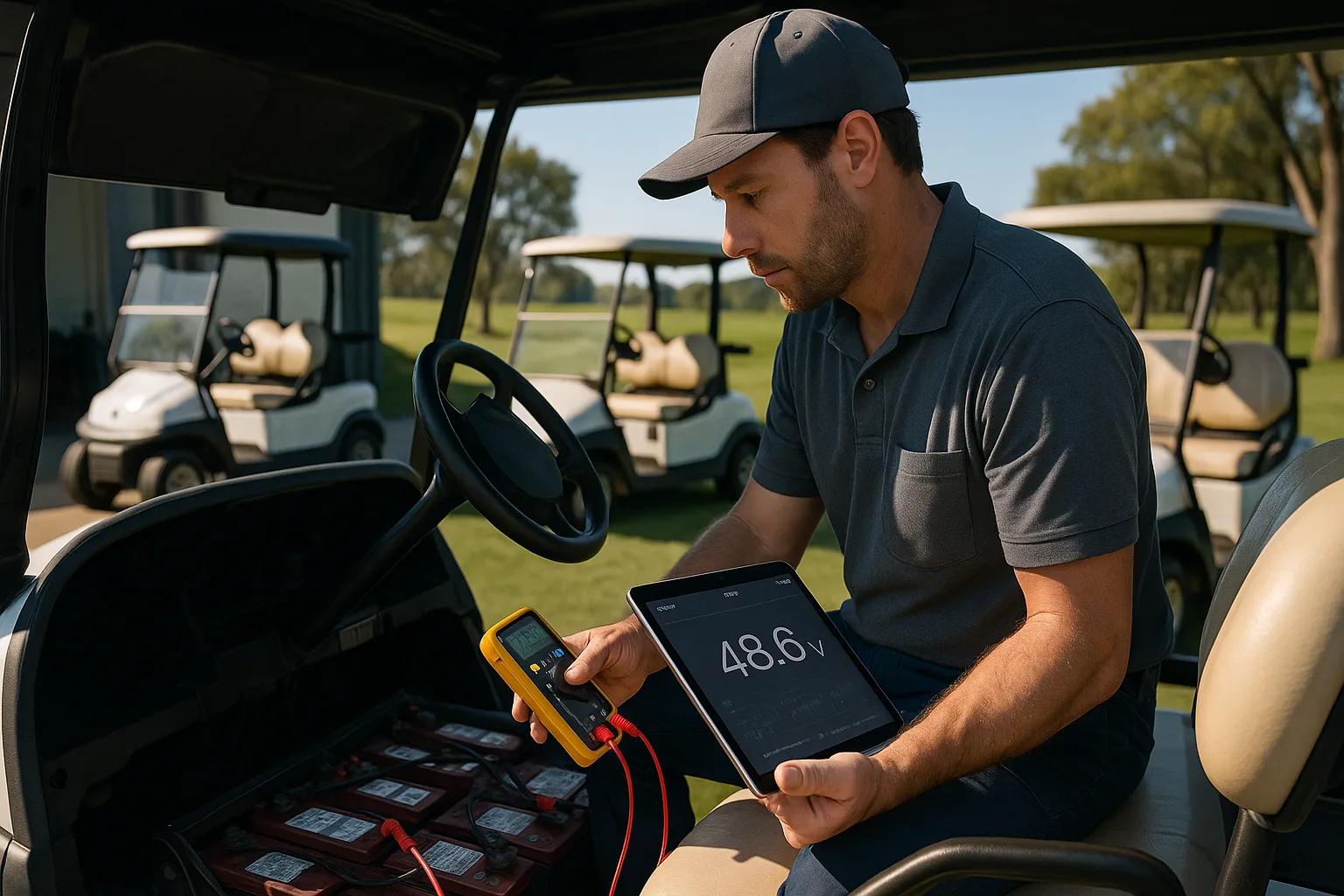
Carts die early when power is wrong. Range drops. Heat rises. Bills grow. I stop this by checking chemistry, current, wiring, and charging first, not last.
Pick deep-cycle batteries that match your cart voltage and controller current. Size capacity for your course. Use a matched charger. Replace weak packs together. Do not tap single batteries for 12 V; use a DC-DC converter.
A course manager called me after carts quit on hole 14. The batteries were new. The controller current was not. I fixed the settings, changed cables, and the fleet finished 18 with reserve.
How much are golf cart batteries?
Prices vary by chemistry, capacity, and warranty. I price total cost per hour, not only the sticker.
Flooded or AGM lead-acid sets are often the lowest upfront. LiFePO4 costs more at purchase, but less per cycle. Include charger, cables, and mounts in the budget. Ask for a real warranty and service terms.
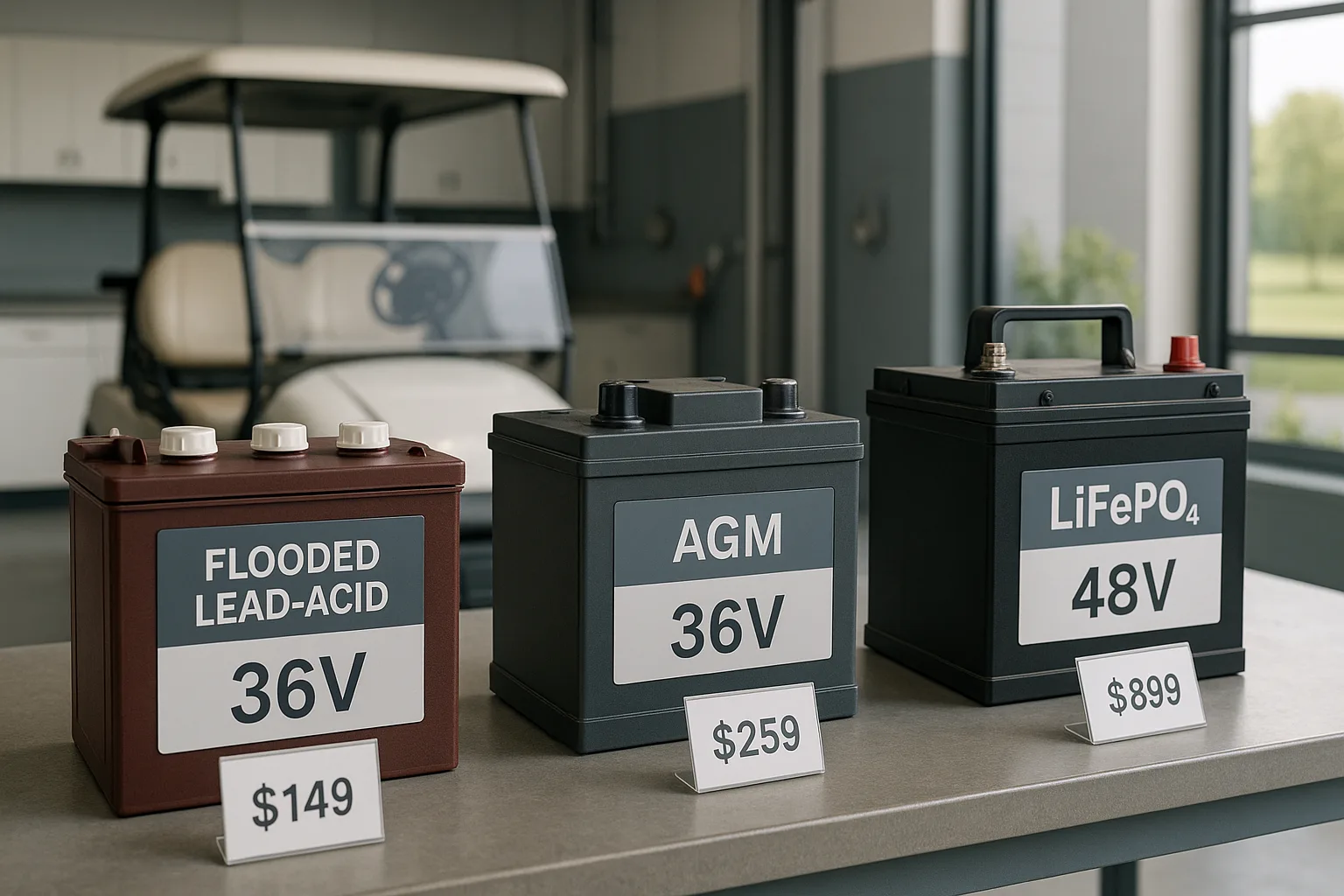
Typical budget bands (guide, not quotes)
| System & type | What you buy | Approx. upfront* |
|---|---|---|
| 36 V lead-acid (6×6 V) | Deep-cycle flooded/AGM set1 | \$600–\$900 |
| 48 V lead-acid (6×8 V or 4×12 V) | Deep-cycle flooded/AGM set | \$800–\$1,200 |
| 48 V LiFePO42 (drop-in) | Pack with BMS + charger | \$900–\$3,500+ |
| 48 V LiFePO4 (fleet modules) | Modular trays, CAN data, matched charger | \$2,500–\$5,500+ |
*Region, capacity, and brand change this. I compare cycle life, warranty, and support location.
What I always add to the quote
- Charger matched to chemistry3 and voltage.
- New main cables and lugs if corroded or undersized.
- Mounting, tie-downs, and vent or heat path checks.
Can golf cart batteries be restored?
Sometimes, but results are limited. Lead-acid may recover a little. Lithium should not be “reconditioned.”
For flooded lead-acid, cleaning, proper water level, equalize charge, and cable fixes can gain some range if sulfation is mild. For LiFePO4, do not attempt revival beyond standard balance; replace weak packs for safety and reliability.
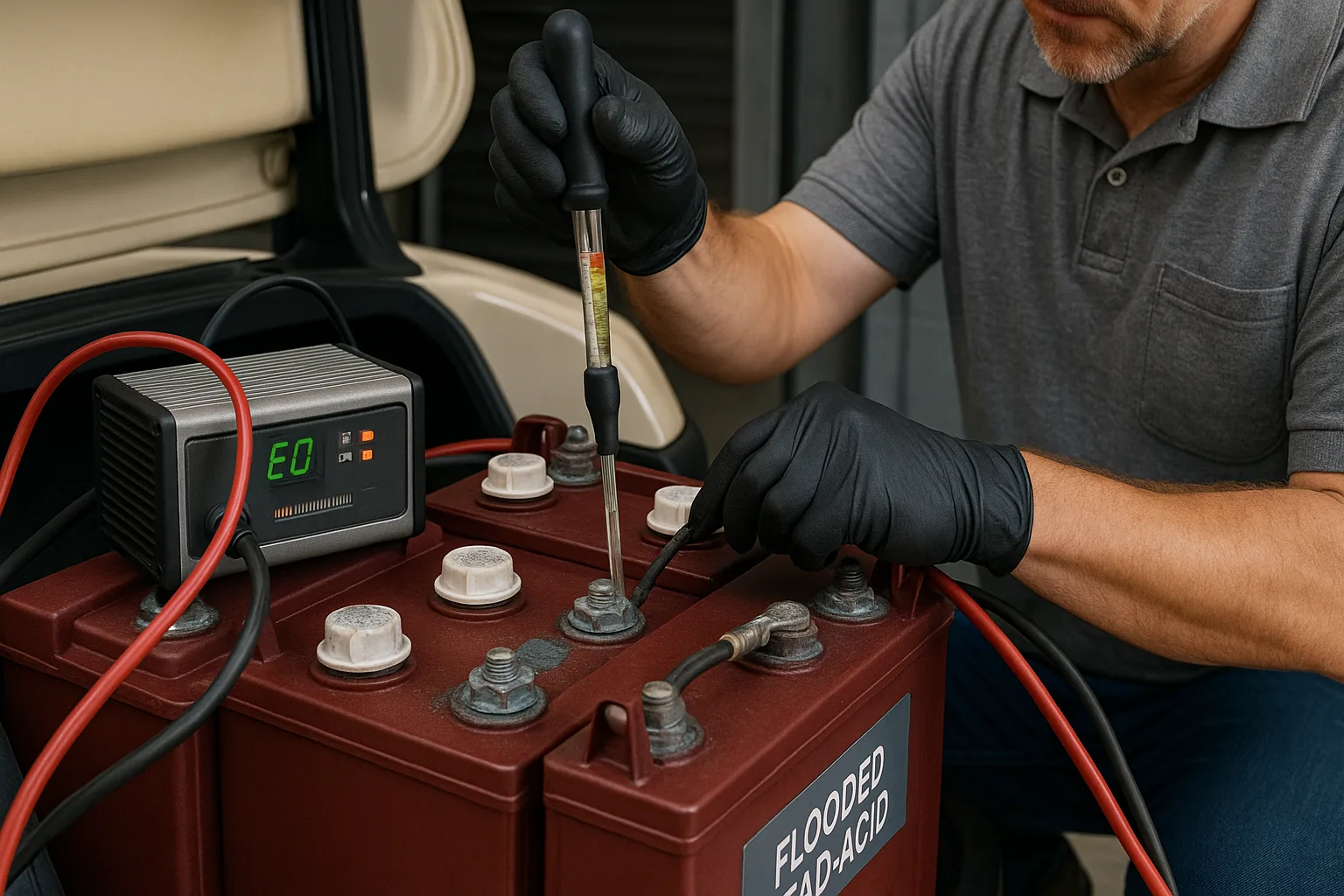
Dive deeper: what works and what does not
Lead-acid (flooded/AGM)
- Helps: Desulfation charge4, equalize (flooded only), clean terminals, replace bad cables.
- Does not fix: Plate shedding, severe sulfation, warped plates, cracked cases.
LiFePO4
- Helps: Full charge to balance if BMS supports5 it; firmware updates.
- Do not do: Over-voltage “wake-ups,” bypassing BMS, heating cells to charge below 0 °C.
When I say “replace”
| Symptom | My call |
|---|---|
| >20% range loss across multiple cycles | Replace |
| Repeated BMS trips under normal driving | Replace |
| Swelling, leaks, burnt smell6 | Stop use; replace |
Can you replace one battery on a golf cart?
You can, but you should not in a series bank. Mixed age kills the pack.
Replace the whole set in lead-acid banks. One new battery in a string will carry the load and age fast. For lithium modules, replace matched modules as a set or use a single integrated pack.
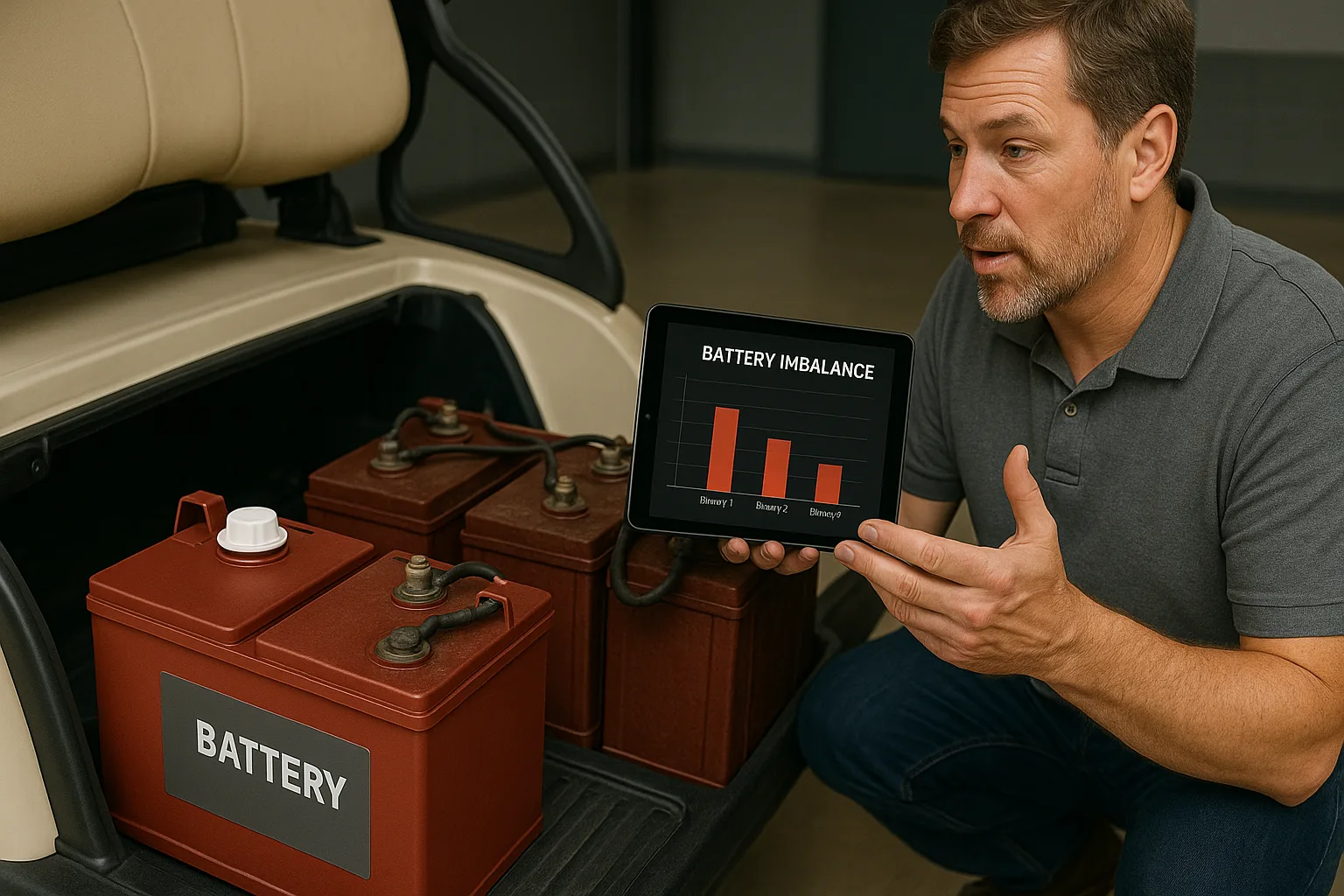
Why one-off swaps fail
| Bank type | Problem with single swap | Better approach |
|---|---|---|
| Lead-acid series | Imbalance, over/under-charge per unit | Replace all; equalize after |
| LiFePO4 modules | Different IR and SOC mismatch | Replace matched set; rebalance |
| Single 48 V pack | Not applicable | Service/replace the pack |
My field rule
If one unit fails, the rest are close. I test, then budget the full set to avoid repeat visits.
Can you use 12-volt batteries in a 36-volt cart?
Yes, if they are deep-cycle and wired in series. Car starting batteries are a bad idea.
Use three 12 V deep-cycle batteries (lead-acid or LiFePO4) in series for 36 V. All must match in age, brand, capacity, and type. Use proper cables and a 36 V charger or three isolated 12 V chargers.
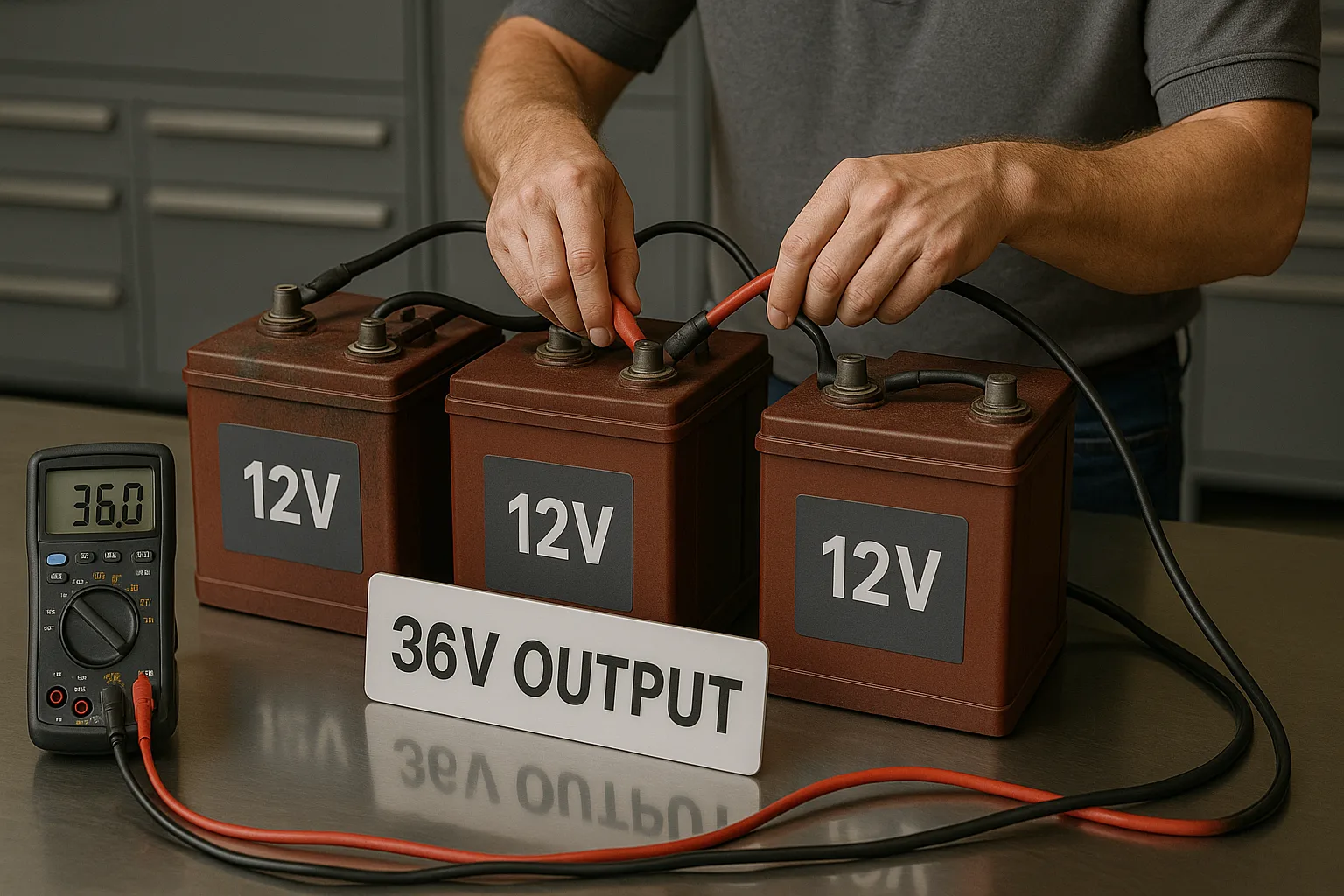
Dive deeper: do it right
- Match all three units. Do not mix old and new.
- Size continuous and peak current for hills.
- Tie-downs, strain relief, and ventilation matter.
- If LiFePO4, confirm each BMS is series-safe and set the same limits.
Quick wiring view (text)
[12 V] + — — — - [12 V] + — — — - [12 V] => 36 V at the first + and last -
How to get 12 volts from a 48-volt golf cart?
Use a DC-DC converter7. Do not tap a single battery in the pack.
Install a 48 V-to-12 V converter with enough current headroom for lights, radios, or accessories. Tapping one battery causes imbalance, early failure, and warranty issues. Fuse both input and output.
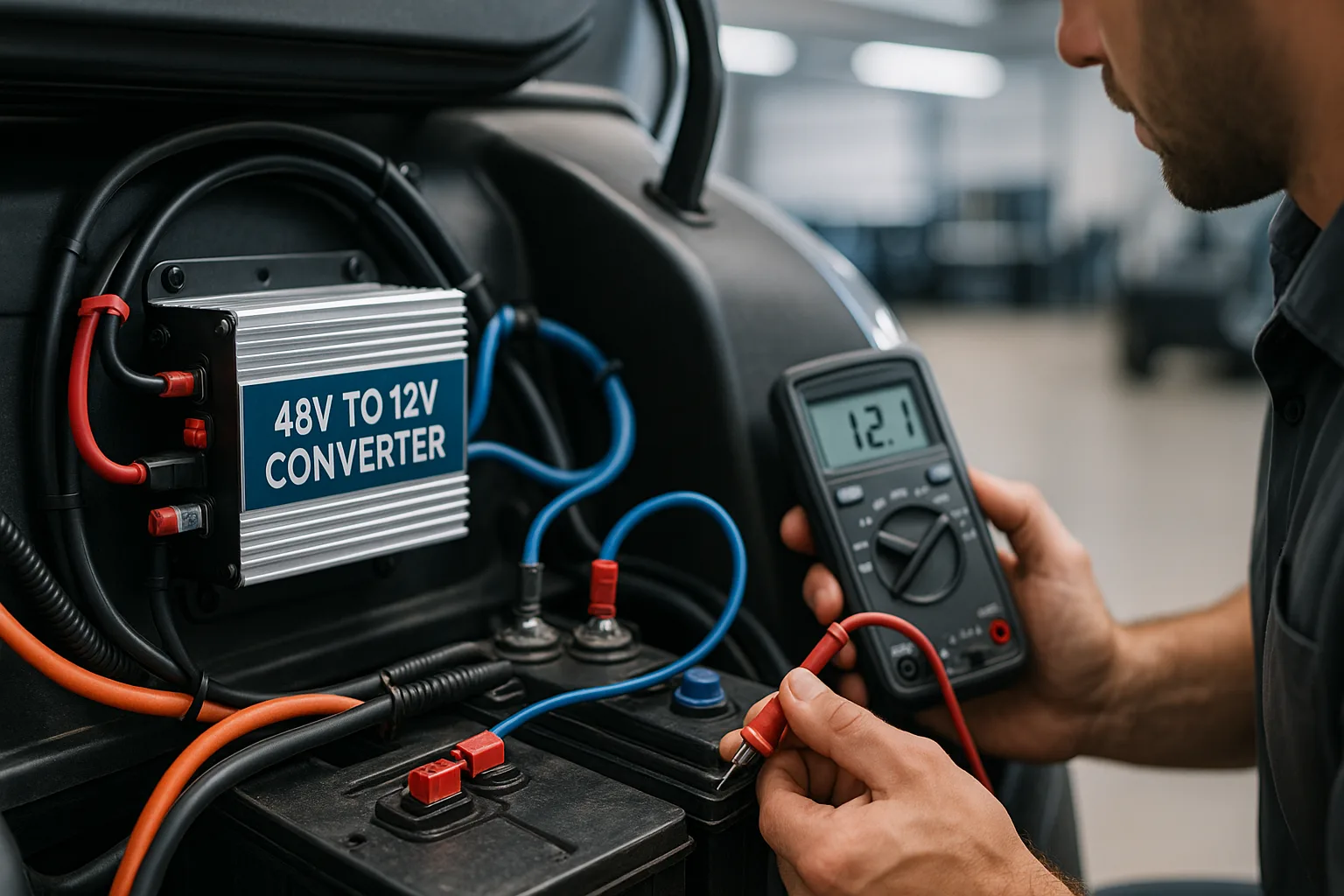
Sizing example
| Accessory load | Continuous amps | Converter I choose |
|---|---|---|
| LED lights + USB | 8–10 A | 15–20 A converter |
| Lights + radio + small winch | 15–20 A | 30–40 A converter |
| Many add-ons (fans, pumps) | 25–30 A | 50 A converter |
Install tips
- Mount to metal for heat spread. Keep dry (IP rating).
- Input fuse near the 48 V source; output fuse near loads.
- Ground returns to the converter, not to random chassis points.
- Label circuits for later service.
Conclusion
Match voltage and current. Replace banks as a set. Use deep-cycle units. For 12 V loads on 48 V, always add a DC-DC converter.
-
Explore the characteristics and applications of deep-cycle flooded and AGM battery sets. ↩
-
Learn about LiFePO4 technology, its benefits, and why it’s a popular choice for modern applications. ↩
-
Understand the significance of using the right charger to enhance battery performance and lifespan. ↩
-
Discover how desulfation can help restore lead-acid batteries and improve their efficiency. ↩
-
Gain insights into Battery Management Systems (BMS) and their role in maintaining battery health. ↩
-
Explore the warning signs of battery failure and when to take action for safety. ↩
-
Learn about the function of DC-DC converters and their importance in managing voltage. ↩

